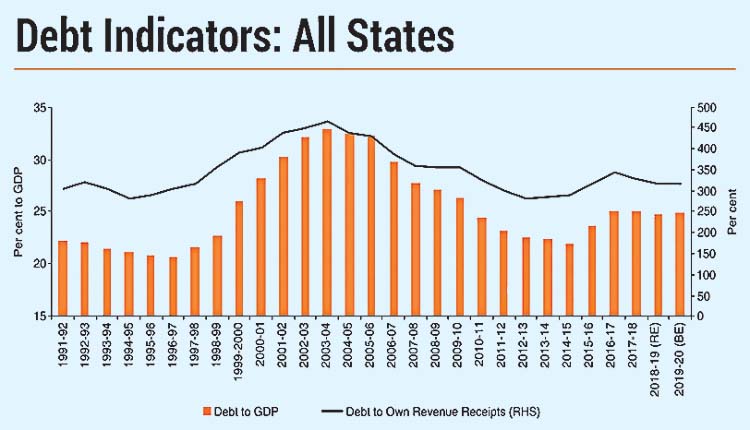Mumbai, May 4 (FN Agency) As more and more states, fighting an unprecedented battle against the pandemic, started borrowing from the market, their cost of funds has begun to shoot up and at Tuesday’s auctions, when seven of them sold Rs 15,900 crore of bonds, it averaged at 6.86 per cent, shows an analysis by Care Ratings. At the auction of state development loans or state government securities on Tuesday, seven states raised Rs 15,900 crore, as Maharashtra accepted an additional Rs 1,000 crore over the notified amount.

There has been a notable shift in the state government borrowings so far in FY22, when compared with that in the same period in FY21, as so far only a few states have tapped the market and the quantum of borrowing too has been significantly lower by 64 per cent in the first five auctions this year, according to Care. The borrowing cost for the states at Tuesday’s auction stayed at elevated levels with the weighted average cost across states and tenures setting at a high 6.86 per cent, according to the agency. The weighted average yields have risen by 30 bps since the first auction on April 8, reflecting the lower demand for these securities amid anticipated higher supply in coming periods, says the agency.
Another reason for the spike is that investors are preferring Central government securities as the RBI has been undertaking secondary market purchases of G-Secs, which has led to easing of yields, which for the benchmark 10- year G-Secs fell by 5 bps in the last one week. The spread between the 10-year state bonds auctioned on Tuesday and the 10-year G-Secs is 73 bps, which is 10 bps higher than that in end March, Care said. So far only 10 states and one UT have raised Rs 25,050 crore so far in FY22 as opposed to 22 states and one UT that had raised Rs 70,255 crore in the same period in FY21, according to Care Ratings. According to their tentative borrowing calendar, 22 states and one UT were to raise Rs 66,650 crore by now but only 38 per cent of that is drawn down by 10 states and one UT.
The lower quantum and the fewer number of state entering the market can largely be ascribed to the lower expenditure undertaken by them relative to their revenue this year. Some states could also be availing of the financial accommodation being provided by the RBI through the short-term borrowing via the special drawing facility (SDF) and the higher ways and means advances (WMA), in place of long-term bonds, as these linked to the repo rate are much cheaper than bonds. The WMA of the states as of April 23 stood at Rs 2,363 crore was significantly higher than the Rs 1,063 crore on April 24 2020. States and UTs resorted to higher market borrowings in FY21 as the lockdowns hit their revenue. In FY21, 28 states and two UTs raised Rs 7.98 lakh crore from markets, 26 per cent more than FY20 when it stood at Rs 6.35 lakh crore.

